Plastics In Food And Bloodstream
PLASTICS IN FOOD AND BLOODSTREAM (ISSUE 166) FEBRUARY 17, 2015
By Diane Gold
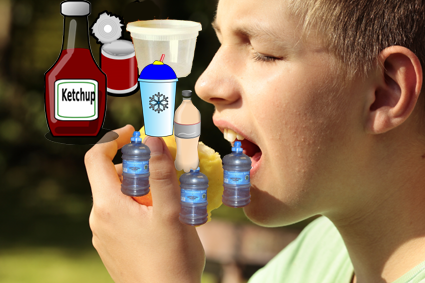 Most of us consume plastics in food. We don’t set out to do it, but some of our plastic technology disintegrates into our food and, therefore, into our blood.
Most of us consume plastics in food. We don’t set out to do it, but some of our plastic technology disintegrates into our food and, therefore, into our blood.
We buy cellophane wrapped produce which leaches into our food. We warm take-out dinners in plastic containers which leach some of their composition. Almost every can we use is coated with plastic-like substance to protect us from toxic aluminum. Bottles from beverages leach toxins. And then, there is plastic dinnerware that is easier to use than any other. Sadly, it allows for plastics in food.
BISPHENOL A (BPA)
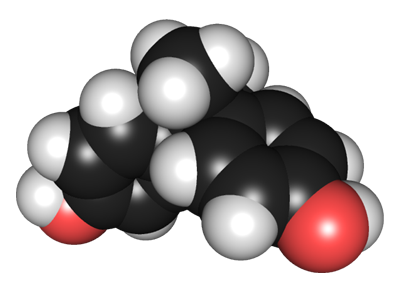 Bisphenol A (BPA) is a chemical that has been studied to find that it can disrupt estrogen. It is found as one of the ingredients in many plastics.
Bisphenol A (BPA) is a chemical that has been studied to find that it can disrupt estrogen. It is found as one of the ingredients in many plastics.
Anila Jacobs, senior scientist at the Environmental Working Group, says,
“Although most of the chemicals making the culinary crossing are considered safe, it’s not because they’ve been proven safe; it’s because no one has proven them unsafe.”
Laura Vandenburg, post doctoral fellow, biology, Tuft U, Boston, mentions the amounts of BPA that leach are small and says,
“Almost any plastic container can be expected to leach trace amounts of plastics into food,”
and
“The levels of BPA in people frequently exceed the levels shown to have effects in rodents in these studies.”
She also mentions that BPA can be found in the linings in cans.
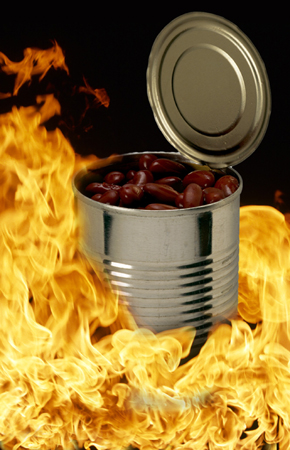 The National Congress Of Legislatures lists the following:
The National Congress Of Legislatures lists the following:
FDA has “expressed some concern” about BPA.
FDA bans BPA from baby bottles and sippy cups as of July, 2012.
The following states have banned BPA in plastic bottles or baby food containers that are intended for young, ages and exact items varying by state:
CA, CT, DE, IL, ME, MA, MN,NV,NY,VT, WI.
Washington prohibits sale, distribution and manufacture of empty bottles that contain BPA.
DC has banned BPA empty bottles if they are to be filled with liquid.
3 years earlier, Suffolk County, Chicago and Canada had banned baby bottles containing BPA.
Another 2 notes on BPA: the U.S. Senate has banned use of thermal receipt and cash register receipt paper because its BPA absorb into the skin at high levels.
According to a Journal of Environment Int’l. March, 2014, issue; BPA disrupts endocrine function and may change signals in feeding behavior. This may directly be related to obesity as neural circuits do not tell the body it is full.
BISPHENOL S (BPS)
As a result of pressure to remove BPA from many of our plastics; on some occasions, we have substituted BPS, bisphenol S. People are just hearing about BPA, so companies know that advertising BPA free on items plays on the public’s ignorance.
According to the Proceedings of the National Academy of Science study , published January 12, 2015; both BPS and BPA have caused abnormal brain development in zebrafish, a species deemed to be a good medical models for studying prenatal brain development to relate it back to humans. It also caused hyperactivity later in the growth cycle.
Unfortunately, BPS may be no better than BPA. So beware of the next chemical that arrives and know its safety first.
PHTHALATES
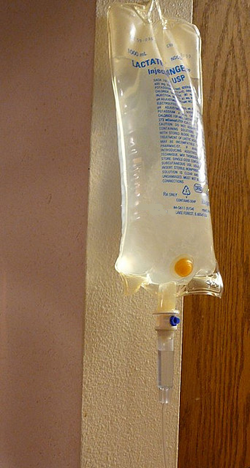 Phthalates are chemicals used in plastic to make it softer or more pliable. Picture one of those IV bags up on a pole that we see on TV or have received in the hospital to get fluids or medicine. The ones in the hospital contain DEHP, diethylhexyl phthalate. It makes the plastic less stiff so bags can be made with thickness to insure non-breakage.
Phthalates are chemicals used in plastic to make it softer or more pliable. Picture one of those IV bags up on a pole that we see on TV or have received in the hospital to get fluids or medicine. The ones in the hospital contain DEHP, diethylhexyl phthalate. It makes the plastic less stiff so bags can be made with thickness to insure non-breakage.
Although the substance does not leach a great amount if the bag is used right away, for those of us who use the 1000 ml sterile bag 100 ml at a time, as many of us do for our animals’ kidneys; DEHP free is always best and poses no phthalate danger.
So, in humans, phthalates can disrupt hormones, particularly testosterone.
They are found in PVC pipes, perfumes, glue, detergent, paint, kids’ toy packaging, shower curtains, food containers, liquid soap, milk, butter, meat. It leaches into our food.
It is banned in the EU as well as Japan, Argentina, Mexico and 6 more.
ESTROGENIC ACTIVITY – VERY IMPORTANT
Plastics can contain chemicals, like BPA and BPS, that cause estrogenic activity. These chemicals mimic estrogen and have effects on reproduction and health.
George Bittner, professor of neuroscience and CEO of two plastics companies, warns very clearly that consumers shouldn’t settle for products that were merely free of BPA. They should demand products that were free of any chemical with estrogenic activity.
LEACHING OF OTHER CHEMICALS INTO OUR FOOD
Although this article is about plastics, it may be worthwhile to research aluminum leaching from pans, a variety of chemicals getting into our food from the non-stick pans we use. Ceramic coated pans break down quickly and toxify, whereas pure ceramic pans last a long time. Glaze on porcelain is probably passing lead into your food and, therefore, your bloodstream.
I looked into buying an all ceramic pan to replace my $30 wok from the discount store. It retailed for $135.
PLASTICS IN FOOD RESEARCH
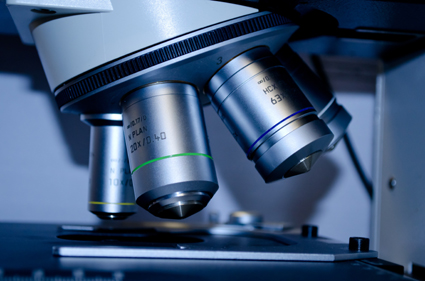 Why would no company or agency do research on whether or not plastics are safe? The answer has to do with, you may have guessed it, profit. If companies did research about plastics in food, chances are, someone would hear about it and publish the results The big D companies and the conglomerate cookware companies don’t want to do any research that might show their products are dangerous. They also discourage others from doing them.
Why would no company or agency do research on whether or not plastics are safe? The answer has to do with, you may have guessed it, profit. If companies did research about plastics in food, chances are, someone would hear about it and publish the results The big D companies and the conglomerate cookware companies don’t want to do any research that might show their products are dangerous. They also discourage others from doing them.
How? They don’t donate money to any entity doing this type of study; and, even if they were to commission a study, they have full rights to the information done in every study so that the researchers MUST share findings with these study donors and approve or disapprove publishing the finds.
Or they may make a donation to a research firm, entity, school so that the team does research on some other project. This is perfectly legitimate though not ethical. But the game of business sometimes chooses money over the greater good.
If it happens that some brave soul funds the project herself or gets a benefactor for the research; these mega companies will somehow promise ongoing donations to the university research lab or government agency research lab so that results from the independent study do not go poorly in favor of how unsafe plastic is for our food because the lab wants its money for next year and next year and the next.
CONCLUSION
Plastics in food are a reality. Our super solutions, like water bottles with BPA, BPS or our canned goods with phthalates were great ideas. Testing them did not go on long enough. Telling the public did not go on at all. And educating the public to how to choose utensils, cookware, drinkware is just starting to happen.
We are responsible for the knowledge. We are also responsible to know that manufacturers’ labels are put there to sell product, not educate us. Therefore, for everything we buy, it’s always a good idea to do the research first.
ACTION STEPS
1) Research containers that hold your water. Make sure you don’t research from the seller. Research the entire class of bottle for which you show interest, and see what the most current papers say. Again, make sure they are not authored by the manufacturer or on the manufacturer’s website.
2) Know that it is not enough to ask your friendly, neighborhood mall worker what’s in the cookware. Most people have no idea other than that someone said BPA was bad and the manufacturers’ sign says BPA free. Do the reading so you can help educate that mall worker and buy the best product for you that is certified Estrogen Activity free. And be on the lookout for the next chemical replacing BPS that may, again, be unsafe.
3) Pass on what you learn. Someone will be grateful.
![]()
If you wish to share your story, please hit reply in your email program to be contacted.
If you need habit help, go to warriorsofweight-consulting.
![]()
FEEDBACK
We value your feedback very much.
Please leave a comment below.
Please LIKE us on the website and at
WarriorsOfWeight on Facebook.
You can also follow us on Twitter @warriorsoweight.
Thanks.
![]()
DIANE GOLD, PUBLISHER AND AUTHOR
Diane Gold, Founder of Warriors of Weight, Turning Habits Into Health, is a mentor in tai chi, kung fu and meditation, a music, fitness and stress expert, dedicated mom, studying plant-based nutrition step and scertificate course, peaceful conflict resolution and habit replacement.
She broke her last bowl the other day, Melamine, made in China. She says,
“I was graced to have broken my melamine bowl. In looking for another bowl for salad/dinner/etc., I realized there is very little out there that is leach free. When something says BPA free, it’s probably true. The formulation does not, however, tell me what it’s not free of, meaning what replaced the BPA.
“It’s probably time to replace the dishes; its definitely time to buy a few pots. All the new information has me doing research as to what might be the least harmful of each, with eye appeal and low enough price. It’s a fun adventure I look forward to sharing.
“Finally, let us all take good care of ourselves, because we are so worth it!”
![]()

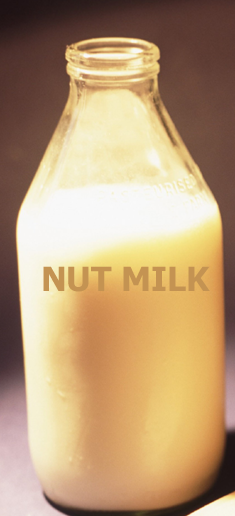 Nut milk is one of the most delicious, nutritious foods I have ever had the pleasure of ingesting, and, of late, of preparing. Until about a week ago, I had always bought nut milk: almond milk, flax milk, soy milk. The process began when I no longer chose to drink flax milk that was not organic. I had been happily buying this wonderful flax milk whose manufacturers promised they were working on putting out an organic version.
Nut milk is one of the most delicious, nutritious foods I have ever had the pleasure of ingesting, and, of late, of preparing. Until about a week ago, I had always bought nut milk: almond milk, flax milk, soy milk. The process began when I no longer chose to drink flax milk that was not organic. I had been happily buying this wonderful flax milk whose manufacturers promised they were working on putting out an organic version.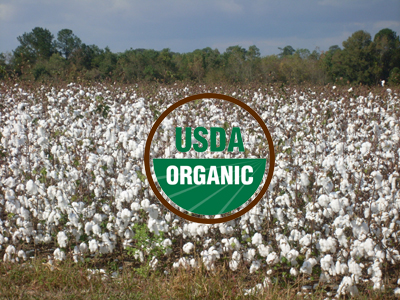 The instruction included the use of some type of straining cloth as for tofu or gauze which I didn’t have so I haven’t been using, plus my smoothies are always very thick and full of seed fiber. Another interesting thing is that it is not very common to find organic cotton tofu cloth. This means the alternative would somewhat defeat the idea of using organically grown, non-GMO, nuts or seeds, since most cotton is genetically modified and would have the distinction of being certified non-GMO if it were organic. So I had hesitated in the past.
The instruction included the use of some type of straining cloth as for tofu or gauze which I didn’t have so I haven’t been using, plus my smoothies are always very thick and full of seed fiber. Another interesting thing is that it is not very common to find organic cotton tofu cloth. This means the alternative would somewhat defeat the idea of using organically grown, non-GMO, nuts or seeds, since most cotton is genetically modified and would have the distinction of being certified non-GMO if it were organic. So I had hesitated in the past.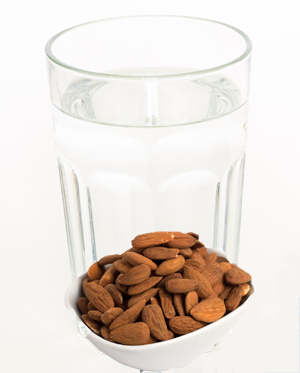 I put 2 cups of filtered water in a glass with a little more than a half cup of almonds, fulfilling my ratio of 4 to 1 for nut milk. I found some chlorine-free parchment paper and covered the glass. I still haven’t figured out a way to stabilize the covering, but I put the glass in the refrigerator overnight. The next morning, I put the water and the almonds in the blender and blended for about a minute. What I got was thicker than the store bought variety nut milk, was a lovely organic, perfectly fresh nut milk and did not contain any of the gums or supplements possibly made from the synthetics that are allowed by the Organic Board. And, look, Mom and Dad, I made it myself.
I put 2 cups of filtered water in a glass with a little more than a half cup of almonds, fulfilling my ratio of 4 to 1 for nut milk. I found some chlorine-free parchment paper and covered the glass. I still haven’t figured out a way to stabilize the covering, but I put the glass in the refrigerator overnight. The next morning, I put the water and the almonds in the blender and blended for about a minute. What I got was thicker than the store bought variety nut milk, was a lovely organic, perfectly fresh nut milk and did not contain any of the gums or supplements possibly made from the synthetics that are allowed by the Organic Board. And, look, Mom and Dad, I made it myself.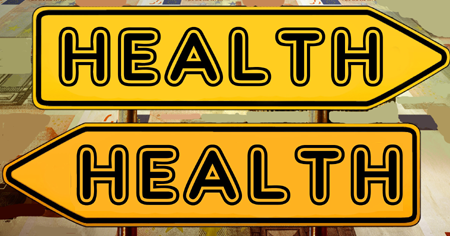 There’s one great reason to drink nut milk: we love ourselves and care about our health. According to the Physicians Committee For Responsible Medicine, 75% of the world (25% in the US) is lactose intolerant. This is true because most of us lose our lactase enzyme (present in babies and toddlers) which allows us to successfully break down milk for use by the bloodstream. So, some of us, after age 3, cannot break down milk and notice difficulty in drinking it.
There’s one great reason to drink nut milk: we love ourselves and care about our health. According to the Physicians Committee For Responsible Medicine, 75% of the world (25% in the US) is lactose intolerant. This is true because most of us lose our lactase enzyme (present in babies and toddlers) which allows us to successfully break down milk for use by the bloodstream. So, some of us, after age 3, cannot break down milk and notice difficulty in drinking it. Aside from the health aspects, nut milk made easily is a supreme convenience for me. It means I can make nut milk as long as I have nuts and a blender.
Aside from the health aspects, nut milk made easily is a supreme convenience for me. It means I can make nut milk as long as I have nuts and a blender.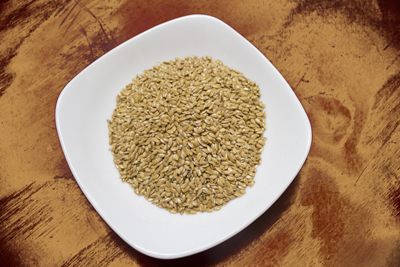 I soak flax seeds overnight, and then, I grind them to break open the hulls. This is a mess. But, I like it. It’s less money than buying the high speed machine that devours every part of every food so grinding is not needed.
I soak flax seeds overnight, and then, I grind them to break open the hulls. This is a mess. But, I like it. It’s less money than buying the high speed machine that devours every part of every food so grinding is not needed.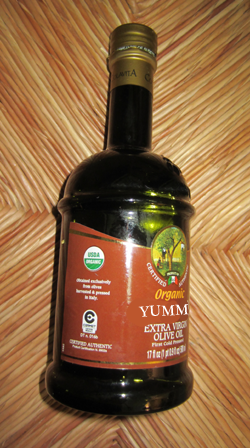 Olive oil science is much more elusive than discussions about how great olive oil is. There is lots of vague discussion about how it is bad for us when it smokes. Much like treated wood when it burns, the olive oil spits out toxins which produce free radicals, nasty suckers that cruise the body for a place to move in and couple. My goal in writing his article was to find the science behind all the generic verbiage about what happens to olive oil at smoke point.
Olive oil science is much more elusive than discussions about how great olive oil is. There is lots of vague discussion about how it is bad for us when it smokes. Much like treated wood when it burns, the olive oil spits out toxins which produce free radicals, nasty suckers that cruise the body for a place to move in and couple. My goal in writing his article was to find the science behind all the generic verbiage about what happens to olive oil at smoke point. During my olive oil science search, I read about many TV chefs who use extra virgin olive oil for sauteing, roasting and grilling and lots of consumer opins about how, if the TV chef says it, it must be right.
During my olive oil science search, I read about many TV chefs who use extra virgin olive oil for sauteing, roasting and grilling and lots of consumer opins about how, if the TV chef says it, it must be right.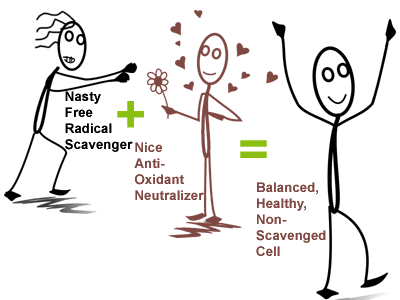 Happily for all of us, Mark goes on to cite an article that explains what is produced and what is toxic about it, for which I thank him. It is from Science Daily’s June 17, 2005 article, sourced from Elhuyar Fundazioa (translated to Language Foundation), from U of the Basque Country Pharmacy Faculty.
Happily for all of us, Mark goes on to cite an article that explains what is produced and what is toxic about it, for which I thank him. It is from Science Daily’s June 17, 2005 article, sourced from Elhuyar Fundazioa (translated to Language Foundation), from U of the Basque Country Pharmacy Faculty. “You cannot test oil for its smoking point on your stove. The so-called ‘smoking point’ is actually the point at which the molecules of your oil start falling apart. This happens long before there is any visible smoke above the pan. At the point where you can see the smoke, it is already too late.” (rumtscho at stackexchange.com)
“You cannot test oil for its smoking point on your stove. The so-called ‘smoking point’ is actually the point at which the molecules of your oil start falling apart. This happens long before there is any visible smoke above the pan. At the point where you can see the smoke, it is already too late.” (rumtscho at stackexchange.com)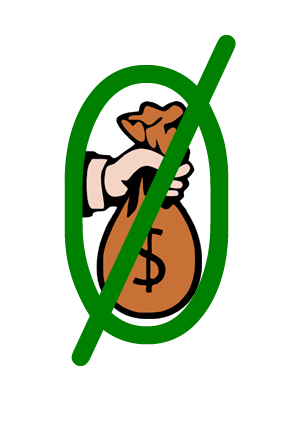 Our habit of not paying for our food is common. Since most of us are basically moral and would not thoughtfully take food without growing it or compensating the grower for it, this statement needs further discussion. We’ll start with the upfront premise that it is our duty to preserve our humanity and whatever else lives on our planet with good food.
Our habit of not paying for our food is common. Since most of us are basically moral and would not thoughtfully take food without growing it or compensating the grower for it, this statement needs further discussion. We’ll start with the upfront premise that it is our duty to preserve our humanity and whatever else lives on our planet with good food.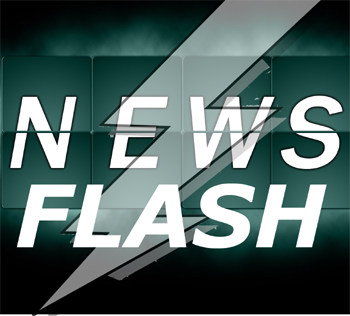 Newsflash! Currently, no one pays a monetary price for this. Everyone’s grandchildren will pay for it.
Newsflash! Currently, no one pays a monetary price for this. Everyone’s grandchildren will pay for it.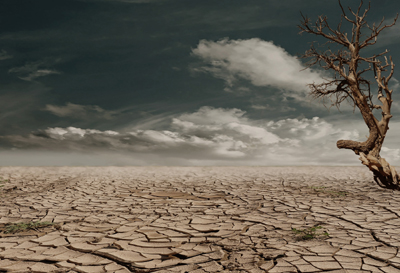 This means no one pays financially for the circumstances we create, and no one pays to clean what we dirty.
This means no one pays financially for the circumstances we create, and no one pays to clean what we dirty.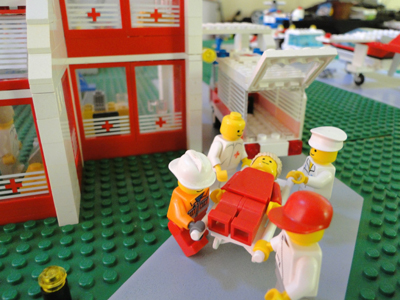 (If we wanted to look from a health perspective, we also pay because eating meat, fish, fowl and dairy cause health issues. So, we pay with our health.)
(If we wanted to look from a health perspective, we also pay because eating meat, fish, fowl and dairy cause health issues. So, we pay with our health.)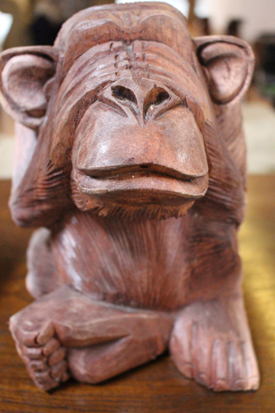 If we don’t educate ourselves because we listen to Big News which is close friends with Big Agro which miseducates us or omits how agriculture drives global depletion fueled by our gluttony; we are closing our eyes and failing to learn. Many teachers are not yet aware of the vast differences in land, oceans, air, soil used to farm animals or plants. Even if we don’t mean to do it, if we don’t investigate how we are not paying, we perpetuate the hurt.
If we don’t educate ourselves because we listen to Big News which is close friends with Big Agro which miseducates us or omits how agriculture drives global depletion fueled by our gluttony; we are closing our eyes and failing to learn. Many teachers are not yet aware of the vast differences in land, oceans, air, soil used to farm animals or plants. Even if we don’t mean to do it, if we don’t investigate how we are not paying, we perpetuate the hurt.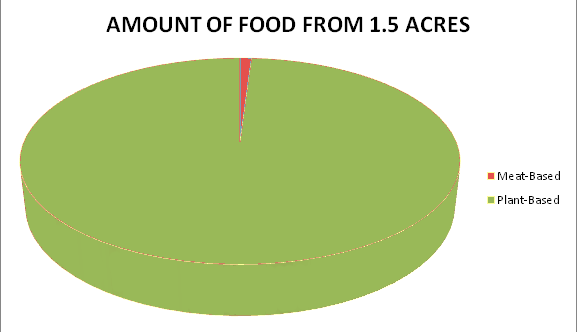 3)
3) 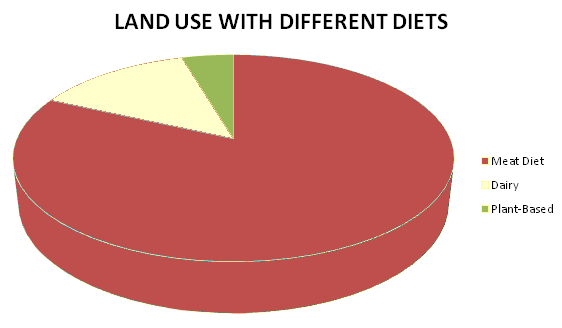 4)
4)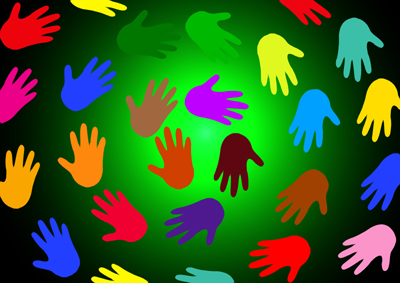 John Perkins told a story about the Shuar Tribe in Ecuador. One of the community came back to the elders with news that a plant along the trail was healthy when he went by, but 72 hours later, when he came back, the plant was sick. The elders had a council meeting, conferring with a wise one who said the plant gave a sign that the path was overused. They decided to take community responsibility and ruled to close the path.
John Perkins told a story about the Shuar Tribe in Ecuador. One of the community came back to the elders with news that a plant along the trail was healthy when he went by, but 72 hours later, when he came back, the plant was sick. The elders had a council meeting, conferring with a wise one who said the plant gave a sign that the path was overused. They decided to take community responsibility and ruled to close the path.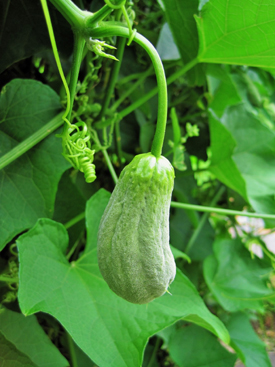
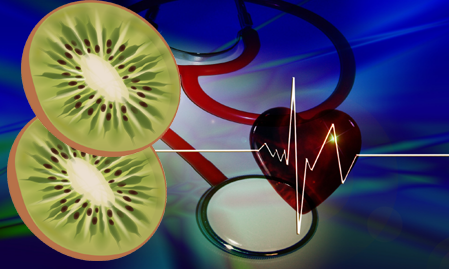 5 Ways To Improve Your Health And Mine will pick areas that are commonly important to us all. How can we go wrong with these options? Feeling healthy makes us feel happier, be more self-sufficient, be stronger on a daily basis, build our body’s foundation and position ourselves for a longer life. So, let’s consider whatever of these ways makes sense and add one to our lives for the new year.
5 Ways To Improve Your Health And Mine will pick areas that are commonly important to us all. How can we go wrong with these options? Feeling healthy makes us feel happier, be more self-sufficient, be stronger on a daily basis, build our body’s foundation and position ourselves for a longer life. So, let’s consider whatever of these ways makes sense and add one to our lives for the new year.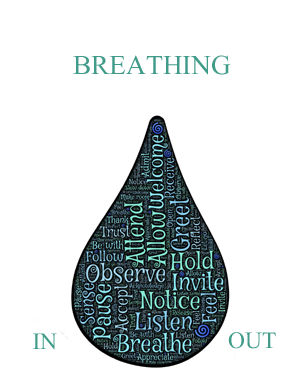 Obviously, we are involved in breathing all day. The body regulates this action automatically, if we don’t. But we can pay deliberate attention to it for extra health. When we slow down and pay attention to the air that goes in and the air that comes out, we build up life energy, almost as if we are storing valuables in a vault. Not much time is needed here, either. Just consistency.
Obviously, we are involved in breathing all day. The body regulates this action automatically, if we don’t. But we can pay deliberate attention to it for extra health. When we slow down and pay attention to the air that goes in and the air that comes out, we build up life energy, almost as if we are storing valuables in a vault. Not much time is needed here, either. Just consistency.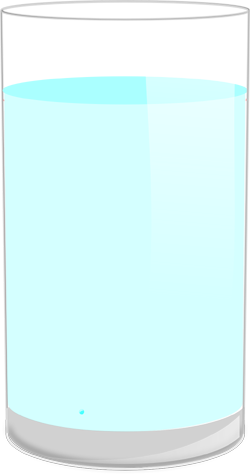 Water is crucial. The more fruits and veggies we eat, the more water we have to drink as water. As long as we keep our body’s water balanced, 65% of our body mass, we will be in good shape. The body has water inside our cells, called intracellular fluid. It also has water outside the cells, extracellular fluid, such as water in blood, spine, stomach, both of which have to be kept balanced. Food and salt intake concentrate the “out of cell” fluid while less dilute it.
Water is crucial. The more fruits and veggies we eat, the more water we have to drink as water. As long as we keep our body’s water balanced, 65% of our body mass, we will be in good shape. The body has water inside our cells, called intracellular fluid. It also has water outside the cells, extracellular fluid, such as water in blood, spine, stomach, both of which have to be kept balanced. Food and salt intake concentrate the “out of cell” fluid while less dilute it.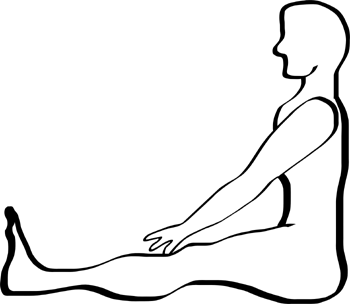 The great news about stretching is that we can do it almost anywhere. We have joints that move while we are stationary, so we can think of a body part and begin to move it. Moving it brings heat, blood with life-sustaining oxygen, and flexibility. We do not need any special exercise.
The great news about stretching is that we can do it almost anywhere. We have joints that move while we are stationary, so we can think of a body part and begin to move it. Moving it brings heat, blood with life-sustaining oxygen, and flexibility. We do not need any special exercise.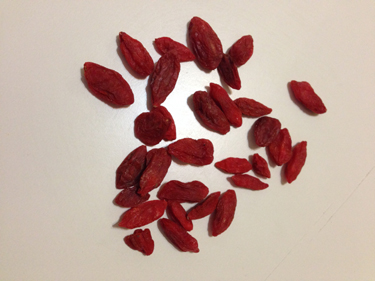 In the past several decades, in the United States, there has been talk about superfoods. The word, superfoods, has been so overused by the nutritional supplement industry that it’s hard to know what’s marketing and what’s science.
In the past several decades, in the United States, there has been talk about superfoods. The word, superfoods, has been so overused by the nutritional supplement industry that it’s hard to know what’s marketing and what’s science. Whether we sleep alone or together, taking a short moment to put a smile into ourselves before we fall asleep will cause relaxed mind and muscles and make for good dreams and restful sleep.
Whether we sleep alone or together, taking a short moment to put a smile into ourselves before we fall asleep will cause relaxed mind and muscles and make for good dreams and restful sleep.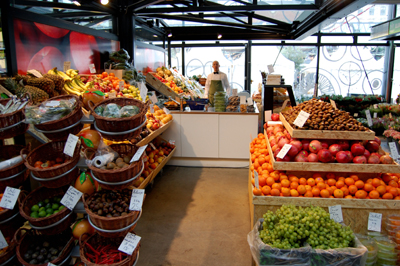
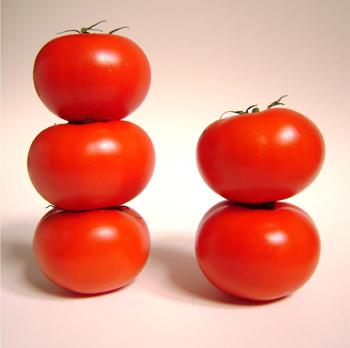 When we went to buy tomatoes, we never thought about why they were shiny. We just thought they came that way. To this day, most people don’t know that most produce, including that which is certified organic, is sent to the finishing plant after the grower and before the retailer. It gets packaged for resale using lots of different questionably safe plastics. Plus, it often gets a coating that keeps the moisture in that we commonly refer to as vegetable or fruit wax.
When we went to buy tomatoes, we never thought about why they were shiny. We just thought they came that way. To this day, most people don’t know that most produce, including that which is certified organic, is sent to the finishing plant after the grower and before the retailer. It gets packaged for resale using lots of different questionably safe plastics. Plus, it often gets a coating that keeps the moisture in that we commonly refer to as vegetable or fruit wax.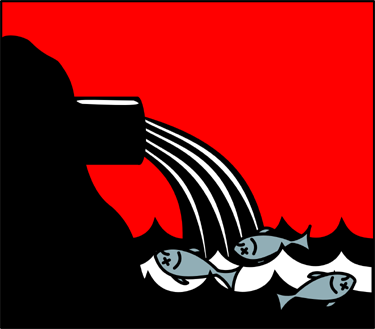 The Food and Drug Administration is responsible for the safety of food and drugs. Unfortunately, they are given information by industry giants aka Big Food, that may force them to allow certain chemical processes whose studies were not extensive enough to show the long-term risks. The FDA cares about protecting us from pathogens, like clostridium botulinum. Big Food & Chemical companies show them expensive studies where such and such a product, be it plastic wrapping or modification of the air used in packaging and storing or transporting, are safe for the consumer; the FDA approves this “finishing” process because they have seen the studies. Too bad the studies don’t go far enough.
The Food and Drug Administration is responsible for the safety of food and drugs. Unfortunately, they are given information by industry giants aka Big Food, that may force them to allow certain chemical processes whose studies were not extensive enough to show the long-term risks. The FDA cares about protecting us from pathogens, like clostridium botulinum. Big Food & Chemical companies show them expensive studies where such and such a product, be it plastic wrapping or modification of the air used in packaging and storing or transporting, are safe for the consumer; the FDA approves this “finishing” process because they have seen the studies. Too bad the studies don’t go far enough.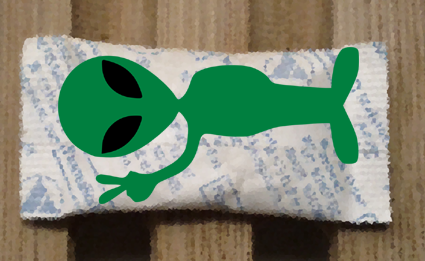 We know that in some of our bags, even in the super food bags with my maca or my cacao, there are little bags of alien origin in them to absorb moisture. Why isn’t the contents of this desiccant made known to us? We have heard it’s made of silicon which is supposed to be food safe, according to the current research, but what about the covering? How many sets of fingers have been on that little bag, or how many kinds of oils were on the conveyer belt it rode down?
We know that in some of our bags, even in the super food bags with my maca or my cacao, there are little bags of alien origin in them to absorb moisture. Why isn’t the contents of this desiccant made known to us? We have heard it’s made of silicon which is supposed to be food safe, according to the current research, but what about the covering? How many sets of fingers have been on that little bag, or how many kinds of oils were on the conveyer belt it rode down?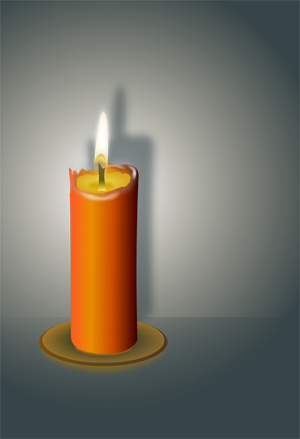
 Composting, how and why discusses how easy it is for us to replenish the soil using our raw kitchen waste and why it benefits us to do it.
Composting, how and why discusses how easy it is for us to replenish the soil using our raw kitchen waste and why it benefits us to do it.








 It’s no surprise that big food and drug donations to cancer research are common. In fact, it might be fair to say that a hefty chunk of annual fundraising revenue comes from this. Why? Well, think about this. If I give you a million dollars a year to live because I believe in your cause, you will be careful not to enrage me, if you want me to continue giving you a million dollars. In the same way, big food gives money to organizations who, in turn, go out of their way not to anger their donors.
It’s no surprise that big food and drug donations to cancer research are common. In fact, it might be fair to say that a hefty chunk of annual fundraising revenue comes from this. Why? Well, think about this. If I give you a million dollars a year to live because I believe in your cause, you will be careful not to enrage me, if you want me to continue giving you a million dollars. In the same way, big food gives money to organizations who, in turn, go out of their way not to anger their donors. Having done food and label research since 1971, I know this to be true. We are at the mercy of companies that do not disclose scientific truth about their ingredients so that they can manipulate people into thinking the ingredient is harmless. They don’t label carcinogens, animal products, what’s in the natural or genetically modified products YET. Most of us are too busy to research these things themselves so depend upon transparency which is not.
Having done food and label research since 1971, I know this to be true. We are at the mercy of companies that do not disclose scientific truth about their ingredients so that they can manipulate people into thinking the ingredient is harmless. They don’t label carcinogens, animal products, what’s in the natural or genetically modified products YET. Most of us are too busy to research these things themselves so depend upon transparency which is not.
 Why is nutrition research left out of grant allocations? Follow the money. There is no way to make money if a company discovers that turmeric can alleviate cancer. There is no way a pharmaceutical company can make a drug from maca root. So the study money goes to the companies who gratefully take it in to research mechanisms that can outcome a hugely profitable product.
Why is nutrition research left out of grant allocations? Follow the money. There is no way to make money if a company discovers that turmeric can alleviate cancer. There is no way a pharmaceutical company can make a drug from maca root. So the study money goes to the companies who gratefully take it in to research mechanisms that can outcome a hugely profitable product. Most of all, we trust the organizations that hand out millions of dollars to research to have our best interest in mind. We don’t question that their hands are tied from speaking about the evidence against their donors. We don’t question why the research that meat and dairy cause cancer is not pursued heavily. We don’t question that so much research money goes to screening disease rather than to educating students and consumers to prevent disease in the first place through good nutrition. We look at organizations one at a time, so we don’t see that every powerful entity is donating money to push a power agendas.
Most of all, we trust the organizations that hand out millions of dollars to research to have our best interest in mind. We don’t question that their hands are tied from speaking about the evidence against their donors. We don’t question why the research that meat and dairy cause cancer is not pursued heavily. We don’t question that so much research money goes to screening disease rather than to educating students and consumers to prevent disease in the first place through good nutrition. We look at organizations one at a time, so we don’t see that every powerful entity is donating money to push a power agendas.
 What’s on your produce is a huge question for many of us, especially if we are brought up believing what we see on our fruits and vegetables. For those of us who know full well that we are eating pesticides and wax, there are still surprises. For many, we are not aware of any of the standard ways the fruit and vegetable supply chain works. We are also confused about why organic food matters and what all this talk has to do with our health.
What’s on your produce is a huge question for many of us, especially if we are brought up believing what we see on our fruits and vegetables. For those of us who know full well that we are eating pesticides and wax, there are still surprises. For many, we are not aware of any of the standard ways the fruit and vegetable supply chain works. We are also confused about why organic food matters and what all this talk has to do with our health. Fruits and vegetables produce a ripening hormone called ethylene. Plants are categorized into two categories: those that ripen after harvest (climacteric species), such as avocados or peaches, and those that do not like oranges or spinach (non-climacteric plants). The ripening process produces a hormone called ethylene, commonly known, not surprisingly, as the ripening hormone. All plants off-gas this substance, but some (the climacteric plants) produce more.
Fruits and vegetables produce a ripening hormone called ethylene. Plants are categorized into two categories: those that ripen after harvest (climacteric species), such as avocados or peaches, and those that do not like oranges or spinach (non-climacteric plants). The ripening process produces a hormone called ethylene, commonly known, not surprisingly, as the ripening hormone. All plants off-gas this substance, but some (the climacteric plants) produce more. So, when a fruit or vegetable is harvested, it goes through a cycle of maturation, or ripening, and then begins senescence, which is its final stage of life. We might wonder about this wax and its safety, but we should be aware that it exists.
So, when a fruit or vegetable is harvested, it goes through a cycle of maturation, or ripening, and then begins senescence, which is its final stage of life. We might wonder about this wax and its safety, but we should be aware that it exists.


 So, there are toxic chemicals being off-gassed from the fertilizer industry which is used on fruits and vegetables that don’t call themselves organic. There’s lots of methane from using cow waste in the soil and from cow waste that sits stagnantly.
So, there are toxic chemicals being off-gassed from the fertilizer industry which is used on fruits and vegetables that don’t call themselves organic. There’s lots of methane from using cow waste in the soil and from cow waste that sits stagnantly. To find out what’s on my produce and your produce is very much a maze. If we are not professional growers, we don’t actually know about many of the items mentioned above. To find out the information is usually no one’s job but our own.
To find out what’s on my produce and your produce is very much a maze. If we are not professional growers, we don’t actually know about many of the items mentioned above. To find out the information is usually no one’s job but our own. If you buy at a local large store, go to the produce department and ask what kind of wax is on your favorite fruits and vegetables. Be persistent since the grocer, most likely, will not know and will say she has no way to find out that information. To cut the process down for you, get the phone number to the store’s regional warehouse. There, ask for the produce buyer. This will start the process of someone’s doing some research for you.
If you buy at a local large store, go to the produce department and ask what kind of wax is on your favorite fruits and vegetables. Be persistent since the grocer, most likely, will not know and will say she has no way to find out that information. To cut the process down for you, get the phone number to the store’s regional warehouse. There, ask for the produce buyer. This will start the process of someone’s doing some research for you. Nutrient composition, as per T. Colin Campbell, is far more important than looking at the amount of one nutrient quantity alone. The amount of calories we ingest is not as important as what type of calorie we take in.
Nutrient composition, as per T. Colin Campbell, is far more important than looking at the amount of one nutrient quantity alone. The amount of calories we ingest is not as important as what type of calorie we take in.

 The following factors can change the amount of a macronutrient (like a carb), a micronutrient (like vitamin A), a macromineral (like calcium), a micromineral (like copper), a phytochemical (like quercetin) that we need on a particular day. When just 1 change occurs in our lives, the body goes through the domino effect, where every system’s connection to every other system in the grand infrastructure we call the human body is affected.
The following factors can change the amount of a macronutrient (like a carb), a micronutrient (like vitamin A), a macromineral (like calcium), a micromineral (like copper), a phytochemical (like quercetin) that we need on a particular day. When just 1 change occurs in our lives, the body goes through the domino effect, where every system’s connection to every other system in the grand infrastructure we call the human body is affected.







